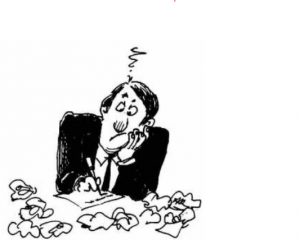Home

On the dock of the bay getting another bright idea
My work includes articles, nonfiction books, short fiction, and specialized research and writing in the field of evidence-based natural medicine. I’ve practiced as a consultant pharmacist with credentials in disease management, geriatric practice, and smoking cessation. As a college educator, I taught pharmacology courses to pharmacy technician students. Currently I’m working on a novel as well as another nonfiction book.
To pay for college, I worked in the college cafeteria in the evenings during the school year and spent summers driving a delivery truck for the Coca-Cola Bottling Company, which included lugging cases of glass-bottled 16-ounce drinks into stores along the route. From this I learned that, given a choice, I leaned toward ultimately having a job that did not take place outside in the summer.
I remember writing my first “story” when I was eight. My main character was the Frankenstein monster. He had scared the bejeebers out of me in the darkened theater when I watched the original movie with my older brother. That was the first inkling that I wanted to write stuff. It faded into the background until much later.
 In high school English class we read short stories. The assignment was to discuss the themes/characters and list examples of figures of speech such as metaphors, similes, and personifications in a composition book. I decided to use what I thought was a unique layout: one section for the themes and characters, followed by a blank page, and a second section for the rest, which I titled “Enlightening Tidbits.” When I picked up my graded composition book, the front page greeting was a stark “D-” followed by the handwritten note “Did you not find any interesting figures of speech?” However, the “D-” had been crossed through and replaced with an “A+” along with the replacement note “You have done an excellent job of this.” Apparently, the teacher had initially surrendered to the blank page, then–thankfully–discovered the second section. She did not ordinarily give A-pluses. From this I learned that being original can pay dividends. I hark back to this experience whenever I think about Esquire fiction editor Rust Hill’s observation that the best fiction is based on “originality of perception and utterance.”
In high school English class we read short stories. The assignment was to discuss the themes/characters and list examples of figures of speech such as metaphors, similes, and personifications in a composition book. I decided to use what I thought was a unique layout: one section for the themes and characters, followed by a blank page, and a second section for the rest, which I titled “Enlightening Tidbits.” When I picked up my graded composition book, the front page greeting was a stark “D-” followed by the handwritten note “Did you not find any interesting figures of speech?” However, the “D-” had been crossed through and replaced with an “A+” along with the replacement note “You have done an excellent job of this.” Apparently, the teacher had initially surrendered to the blank page, then–thankfully–discovered the second section. She did not ordinarily give A-pluses. From this I learned that being original can pay dividends. I hark back to this experience whenever I think about Esquire fiction editor Rust Hill’s observation that the best fiction is based on “originality of perception and utterance.”
Down the road a piece, I wrote my first short story, a countdown “thriller” about the country being drawn into a nuclear war due to a computer malfunction. Thought it was pretty good. I sent it around and got nothing but form rejections. Then I received a hand-written note from editor Ben Bova graciously encouraging me to stick with it. Occasionally I would re-read the story. Each reading left me more aware of its shortcomings, indicating that perhaps a better understanding was hatching. From this I learned that there are steps in the learning process that cannot be skipped, dues that must be paid.
At my Tandy Model II computer & daisy wheel printer circa “way back when” (the era of word processing with Electric Pencil and Scripsit). Electric Pencil was the first word processing software to figure out how to word-wrap text: A partially-typed word at the right margin is moved down to the next line as you type, automatically keeping words intact–a feature taken for granted now, but a real breakthrough then.
I turned to nonfiction–articles, column-writing, and books–in an effort to support myself as a full-time writer, with the goal of one day returning to writing fiction. My first nonfiction book (laboriously pecked out on an old portable typewriter) sold fairly quickly. Blissfully ignorant of the traditional agent-editor process, I had sent the manuscript directly to publishers. (Acquiring an agent after the sale is a snap.) That same year, I attended the first of many workshops for writers. For the occasion, I wrote and submitted my first “real” short story for evaluation by a panel of professional writer-instructors. One instructor, editor at the Southern Review, asked me to change one word–“enjoined” to “indicted”–for accuracy, and to send the story along to him. Here I made the worst decision of my nascent writing career: I did not send him the story as-fast-as-I-could-lick-a-stamp. I held out, thinking that greater recognition would come from placing it in one of the high-paying slick magazines that published short fiction in those days–the likes of Cosmopolitan, Red Book, Family Circle, The Saturday Evening Post–or perhaps even the Atlantic Monthly, the New Yorker or Esquire (ah, the outsized optimism of the novice). Years went by with no takers. I kept revising the story, thinking that would help. Finally, the editor was no longer at the Southern Review. A golden opportunity had slipped through a one-way sieve. Lesson learned: A publication credit in a literary journal will lift your stories out of the slush pile.

